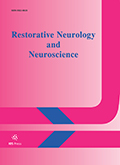Authors: Kasten, Erich | Poggel, Dorothe A. | Müller-Oehring, Eva | Gothe, Janna | Schulte, Tilman | Sabel, Bernard A.
Article Type:
Research Article
Abstract:
Purpose: Brain damage is often accompanied by visual field defects which have been considered to be non-treatable. In recent years, however, new diagnostice methods have revealed hitherto unknown residual vision, which was found, for instance, in transition zones near the blind visual field sectors and in spared islands of vision within the blind regions ("blindsight"). Furthermore, animal studies revealed a high degree of plasticity in the visual system suggesting the possibility that recovery of vision may
…be induced by systematic visual training. Methods: Here we summarize a series of studies with patients suffering from visual field defects after brain lesion using some most recently developed computer-based programs for the diagnosis and treatment of visual field defects. Specifically, high-resolution perimetry (HRP) was applied to first diagnose residual function in or near the "blind" sector of the visual field. Thereafter, visual restitution training (VRT, see Kasten et al., Nature med. 4, 1998, p. 1083) was used daily for 6 months to provide systematic stimulation of these areas of residual vision. Results: In a number of studies, we have observed not only residual visual functions within or near the field defect, but we were also able to follow the course of spontaneous recovery of visual functions within weeks or months after visual system damage. Furthermore, even long after spontancous recovery is complete, computer-based visual restitution training (VRT) in or near the areas of residual vision results in a significant enlargement of intact areas, both after optic nerve damage and postchiasmatic lesions. Using VRT, we found a border shift of about 5 degrees of visual angle which cannot be explained by eye movements or eccentric fixation. We observed a transfer of this training effects to other tasks such as form and color detection, as well as to tests of visual exploration which were not specifically trained. Moreover, 72 % of the patients reported subjective improvements of vision. Training-induced visual field enlargement persisted for at least one year, even in the absence of training beyond 6 months of treatment. Conclusions: The visual system possesses a remarkable plasticity which becomes apparent in visual field enlargement during spontaneous recovery and specifie visual training. Animal studies indicate that a minimum number of residual neurons surviving the lesion, in the order of 10%, provides a sufficient substrate for recovery of vision. Though the precise mechanisms of training-induced visual field enlargement need to be further explored, VRT can be introduced for routine clinical treatment of patients with visual field defects.
Show more
Keywords: Plasticity, functional restitution, visual field defects, residual neuronal structures, training, rehabilitation
Citation: Restorative Neurology and Neuroscience,
vol. 15, no. 2-3, pp. 273-287, 1999




